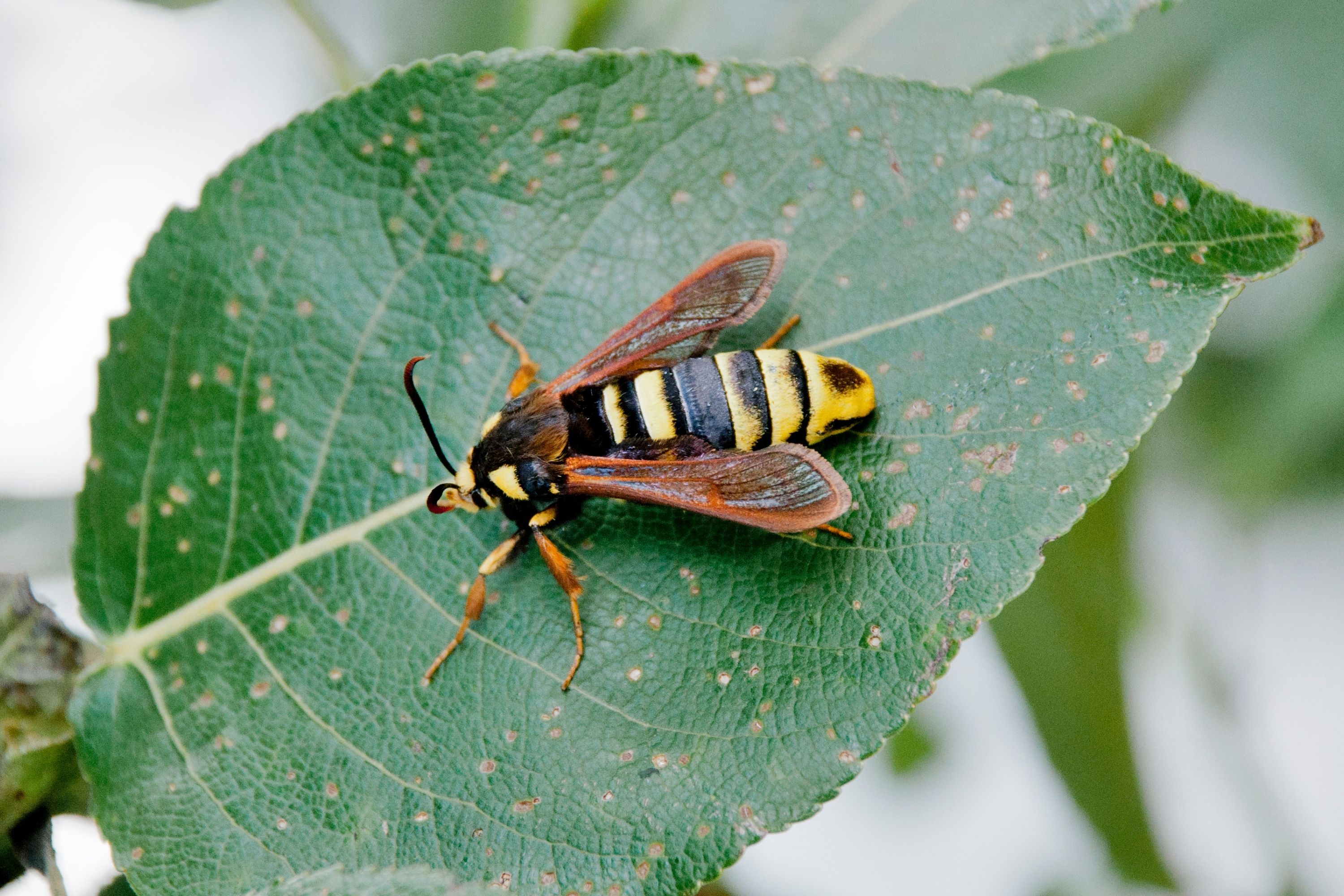Hornet moth
(Sesia apiformis)

Description
The hornet moth or hornet clearwing (Sesia apiformis) is a large moth native to Europe and the Middle East and has been introduced to North America. Its protective coloration is an example of Batesian mimicry, as its similarity to a hornet makes it unappealing to predators. The hornet moth has been linked to the large dieback of poplar trees across Europe because its larvae bore into the trunk of the tree before re-emerging as adults. Sesia apiformis is found across mainland Europe, Great Britain, and in parts of the Middle East. It has also recently been introduced to America and Canada. Adult hornet moths are often found in open habitat such as parks, golf courses, and marshy areas. Females prefer to lay eggs on old or isolated trees, especially trees surrounded by vegetation. Larvae feed on host trees of several poplar species including Populus tremula and Populus nigra as well as Salix caprea. The moth also prefers to feed around trees surrounded by heavy vegetation. It was found that trees near this heavy vegetation suffered from a lot more infestation than those without the basal vegetation. Eggs of S. apiformis are brown and ovular in shape and have a major diameter of 0.43–0.85 mm. They are laid mostly around the base of an isolated tree or in surrounding vegetation. Since the female S. apiformis does not tend to disperse far from the tree from which she emerged, searching for a host plant is not a necessary step before oviposition. The female flies around the tree and continuously deposits eggs, laying from hundreds to thousands at a time. After depositing the eggs, the female flies away and does not return to care for the eggs or the larvae. It is evident when comparing the number of eggs produced to the number of adults that emerge each year that there is a large mortality between egg and adult stages. Therefore, the large number of eggs probably exhibits a trade-off for the female, with a large energy investment in developing eggs but no continued investment of parental care. S. apiformis larvae hatch from September to May and spend two or three years in the larval stage, overwintering as larvae. The larvae are mostly found around the roots of host trees. Prior to pupating, the larvae bore up to ten centimeters into the trunk of the host tree leaving a thin layer of bark over the entrance to disguise the tunnel. Once inside the larva builds a cocoon from silk and excavated tree material.
Taxonomic tree:







